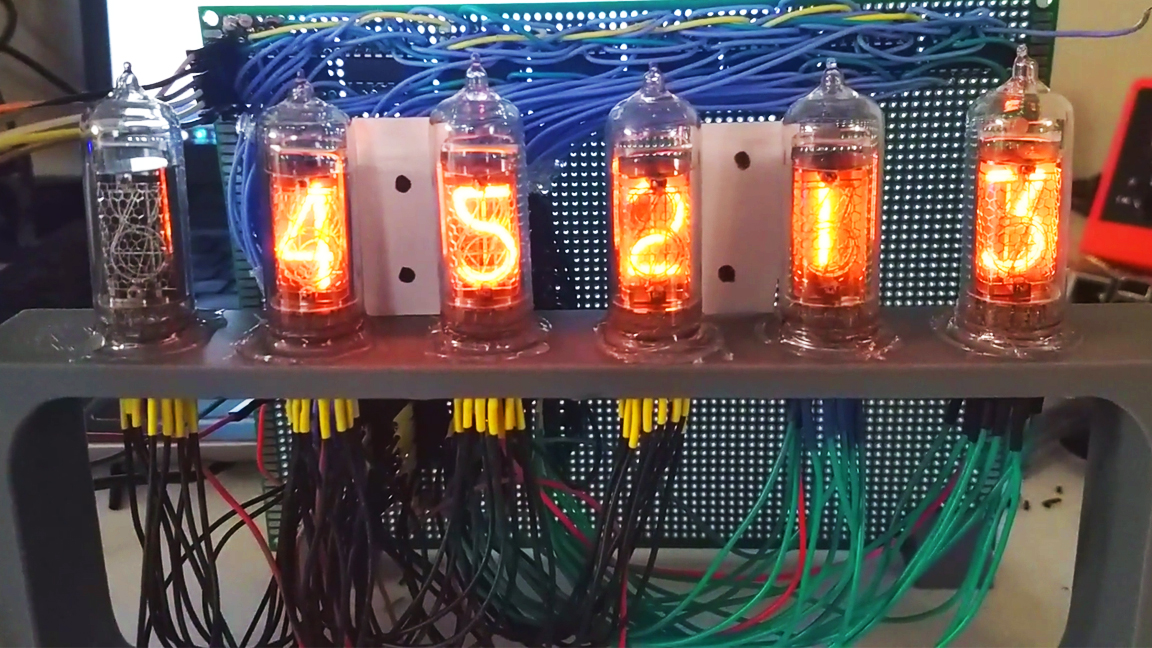Raspberry Pi-Operated Nixie Tubes Make the Perfect Retro Display

If you don’t have a Raspberry Pi-powered set of Nixie tubes, you’re missing out. Nixie tubes are glass tubes with cathodes shaped like numbers. The tubes are filled with low-pressure gas, causing the cathodes to glow when powered. They were first created in the 1950s and linger today as an iconic retro display.
This Pi-powered Nixie tubes project was shared by a Reddit user known as Farrp2011 earlier this week. Farrp2011 used a Raspberry Pi 3 to connect to and control six individual Nixie tubes. The Raspberry Pi doesn't have nearly enough outputs to control that many tubes. To work around this limitation, Farrp2011 used shift registers.
Each Nixie tube requires 10 outputs, one per cathode for a total of 60. Each number has a pin requiring 170 volts. Since the shift registers can't accept that much, Farrp2011 opted to use high-voltage transistors. The project uses a voltage booster board for each tube.
The tubes are controlled using eight SN74HC shift registers that turn transistors on or off. The transistors ground the pin for whatever number you want to activate on the Nixie tube. The whole operation uses just 20 lines of code.
This development is still a work in progress. There are a few things to fix and plans for new features. In the demo, the tubes are used as a clock. Farrp2011 would like to expand their use to other applications, such as displaying weather information or Bitcoin prices.
You can follow Farrp2011 on Reddit for more updates and future Pi projects.
Get Tom's Hardware's best news and in-depth reviews, straight to your inbox.

Ash Hill is a contributing writer for Tom's Hardware with a wealth of experience in the hobby electronics, 3D printing and PCs. She manages the Pi projects of the month and much of our daily Raspberry Pi reporting while also finding the best coupons and deals on all tech.
-
bit_user ReplyIf you don’t have a Raspberry Pi-powered set of Nixie tubes, you’re missing out.
I used to lust over nixie tube clocks, like... 10 years ago?
Someone even made a nixie tube watch!
Each Nixie tube requires 10 outputs
One per digit, I think.
Farrp2011 would like to expand their use to other applications, such as displaying weather information or Bitcoin prices.
As long as it's numeric. At best, you might find hexadecimal nixies, but perhaps they're all just numeric. And I'm not counting the segmented ones, because if you're going to the trouble of using nixies, you really want that iconic look of the originals.
Anyway, Bitcoin prices... man, that sure does sound like 2011.
One last thing about nixies... they burn out. And I don't think anyone is still making them. Apparently, some have longer lifespans than others, but I wouldn't use it in anything meant to stay on, continuously. It's best reserved for showpieces, IMO.